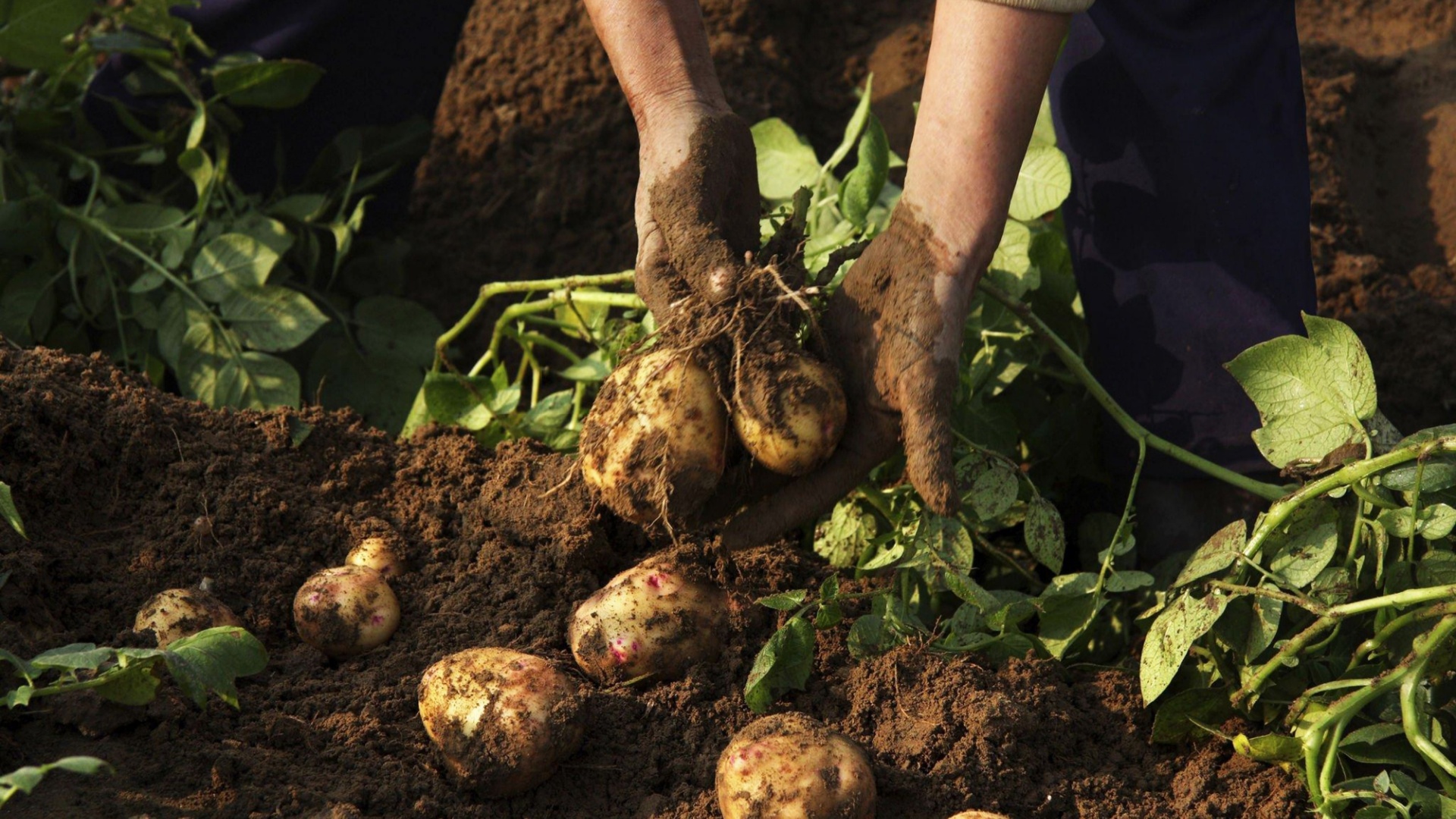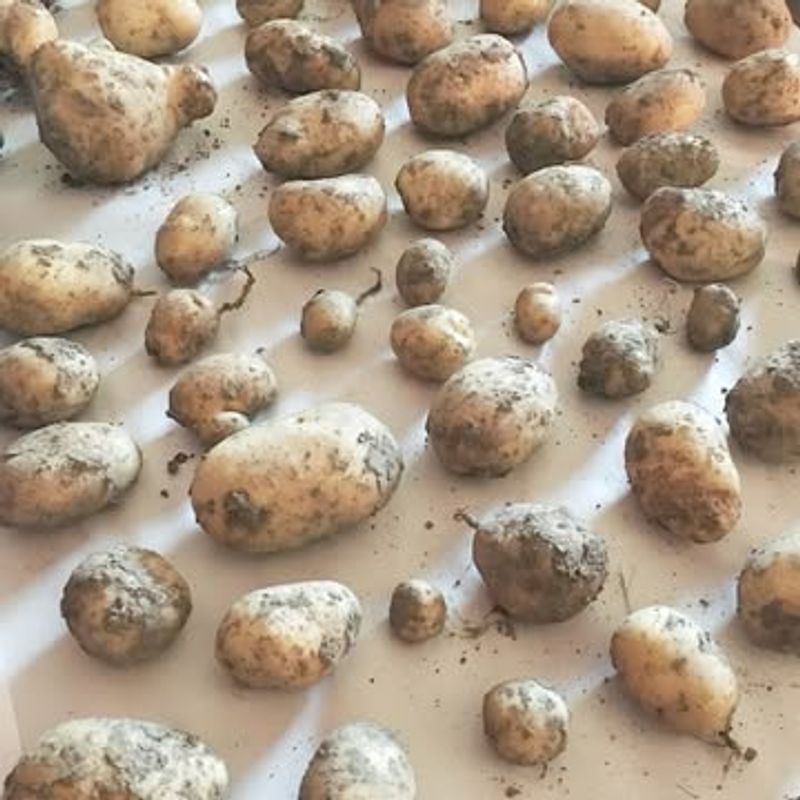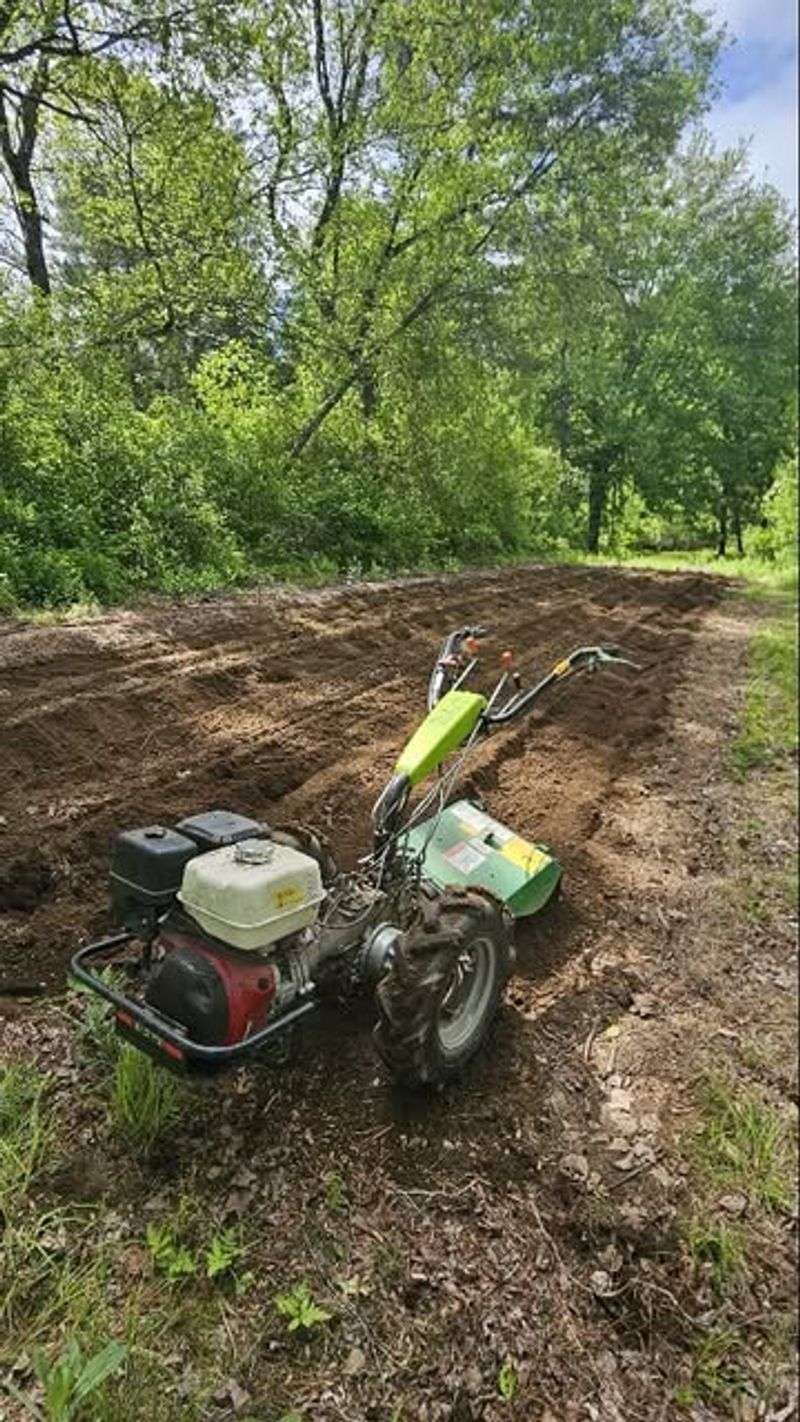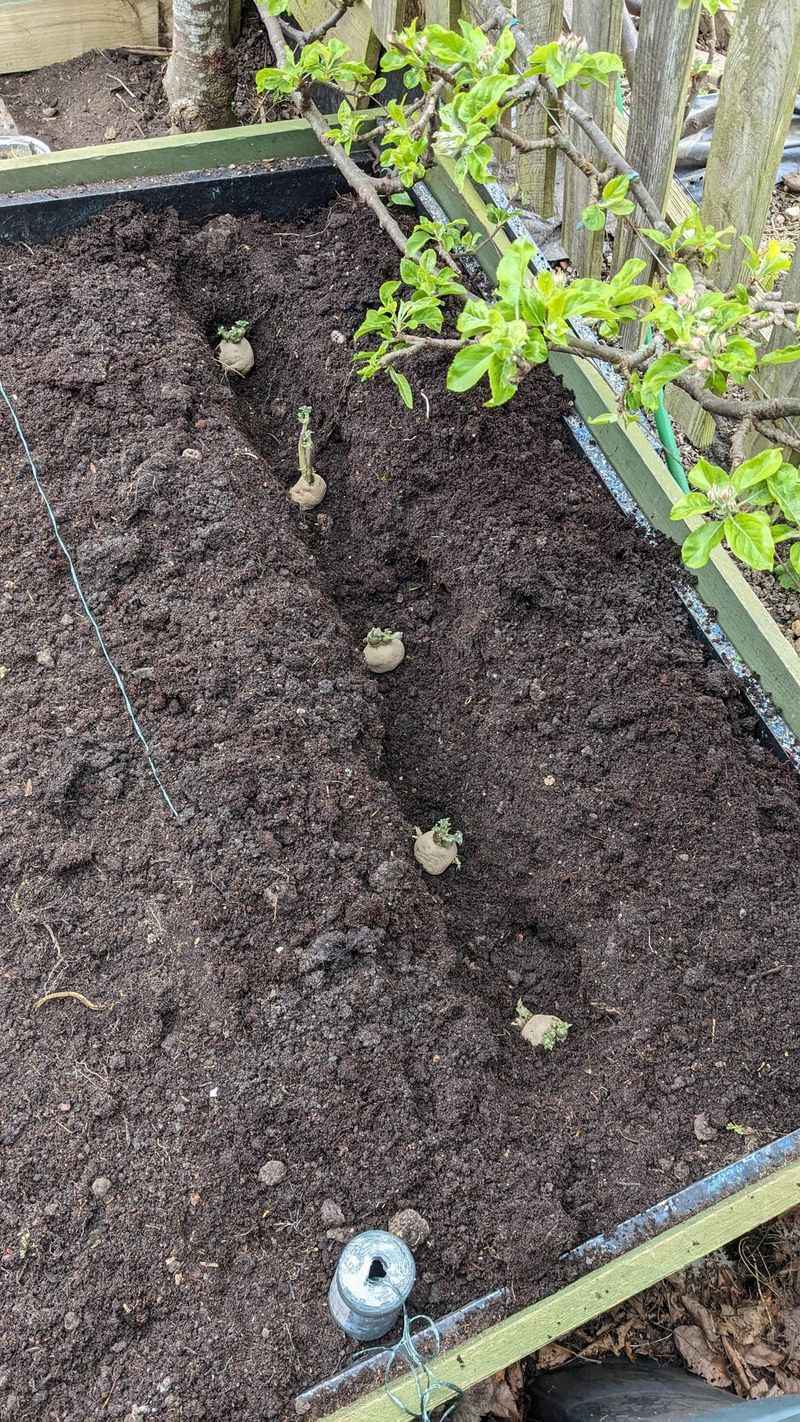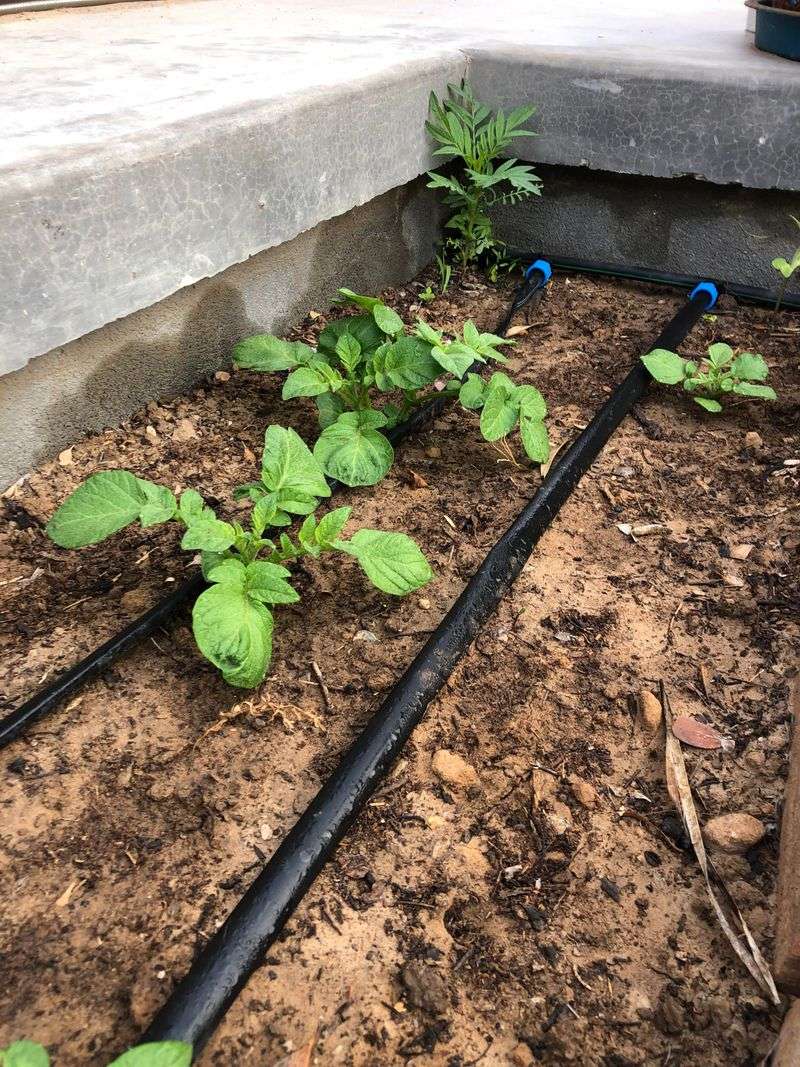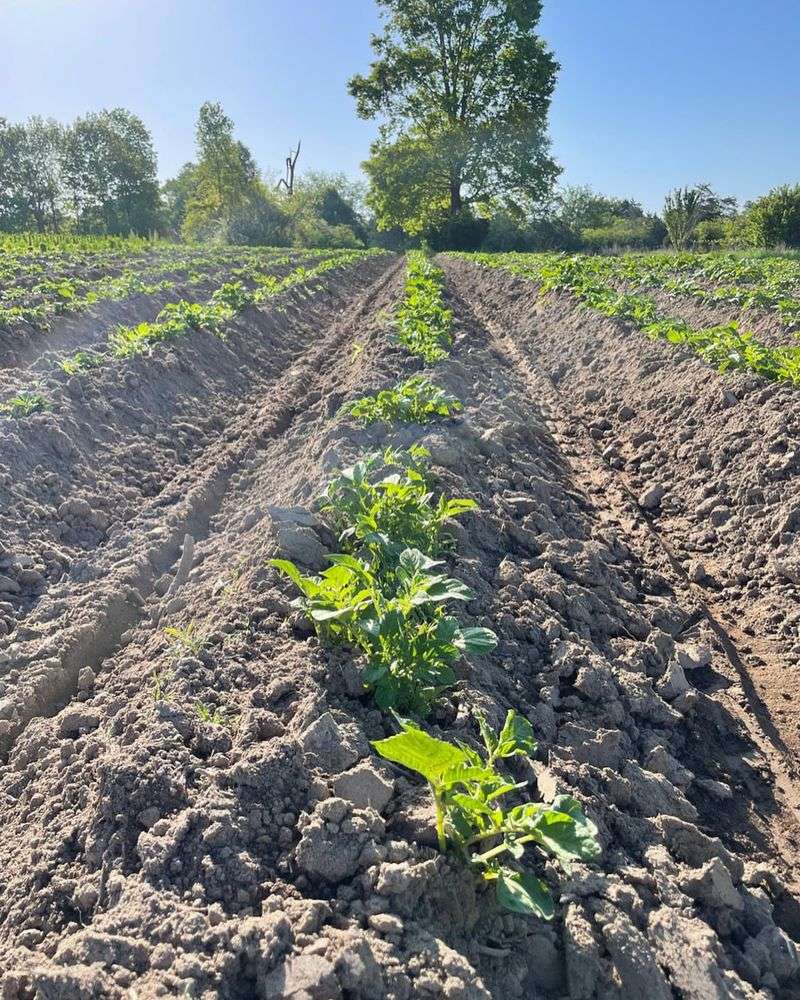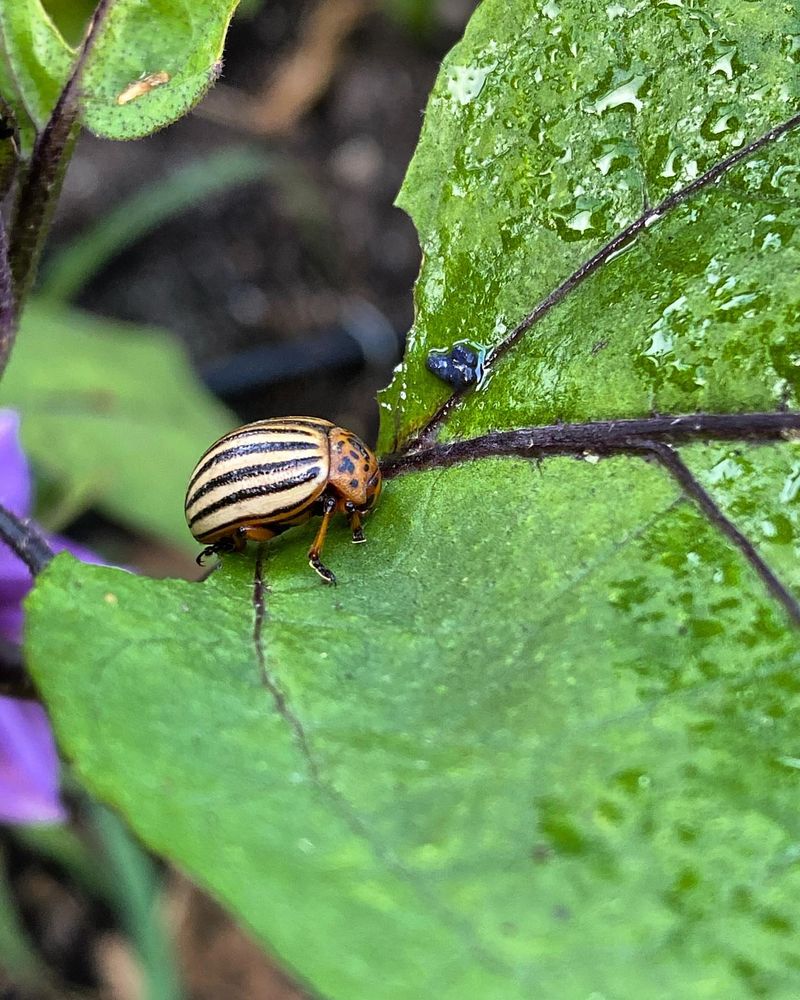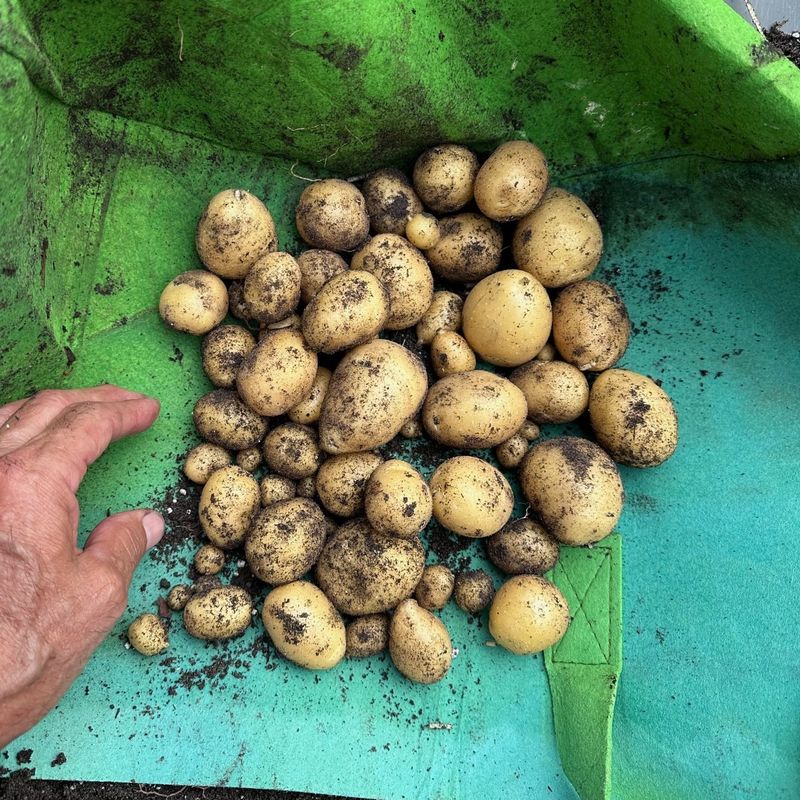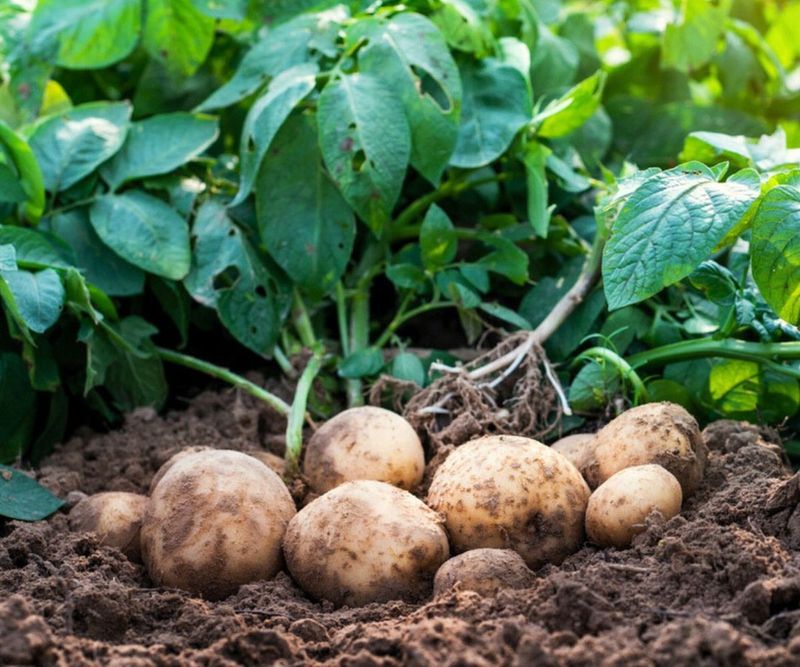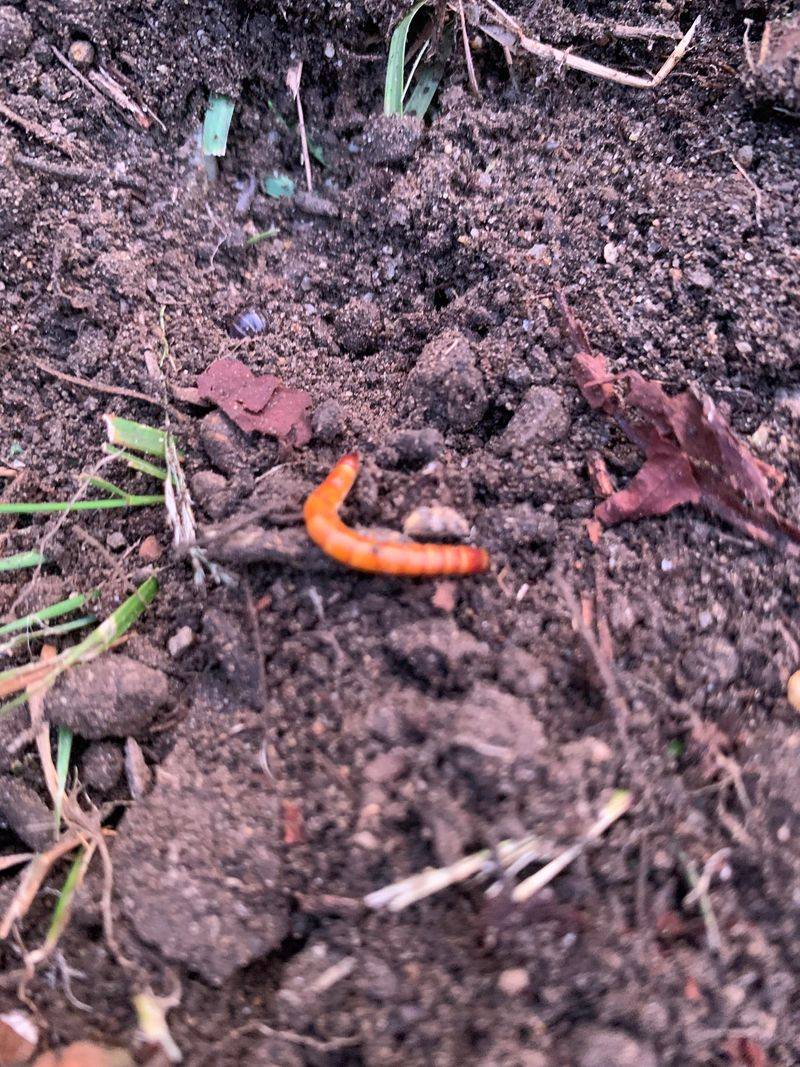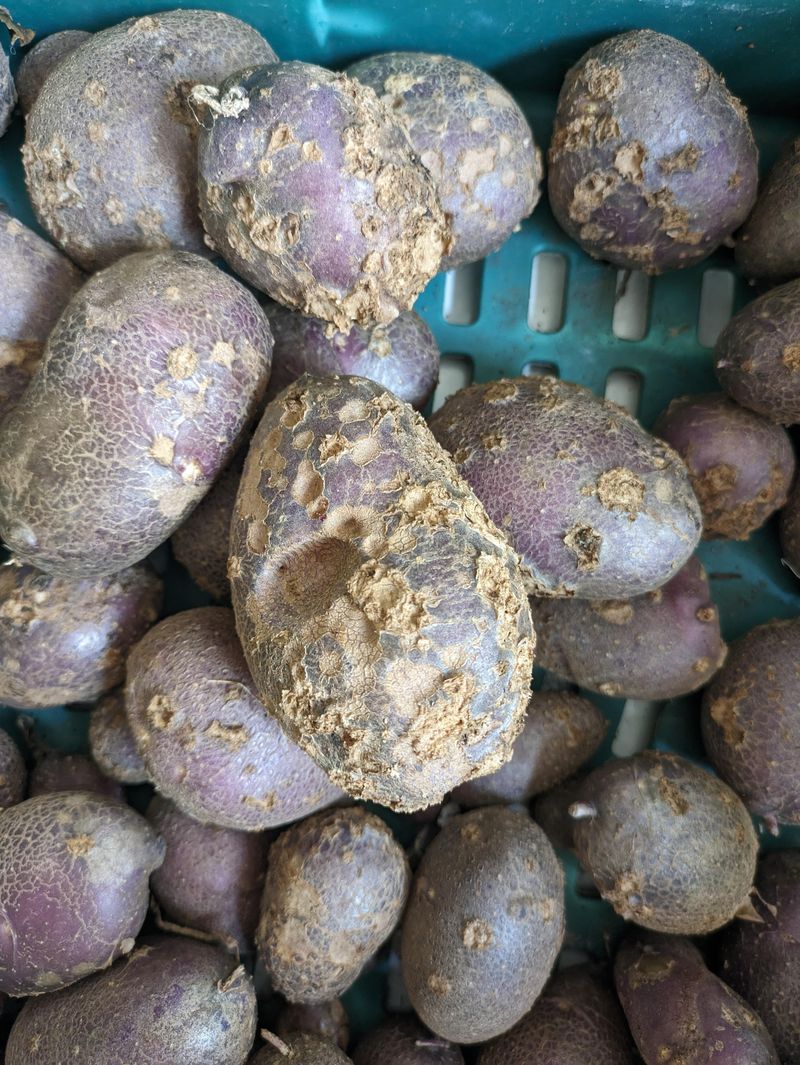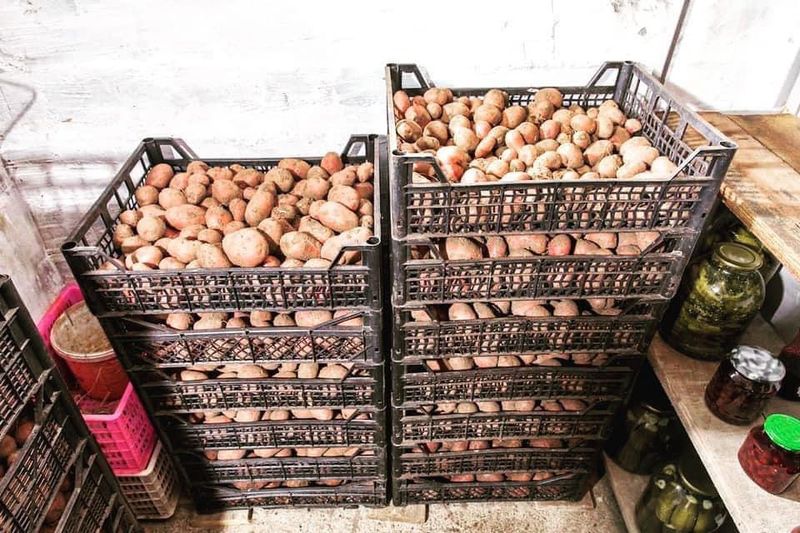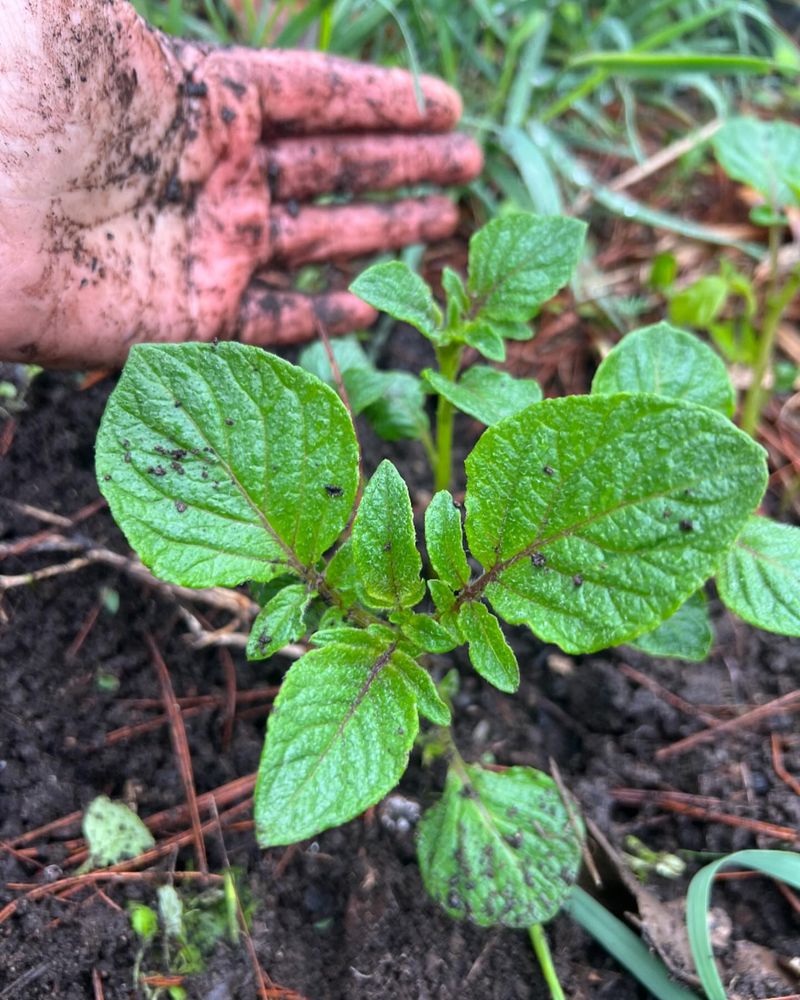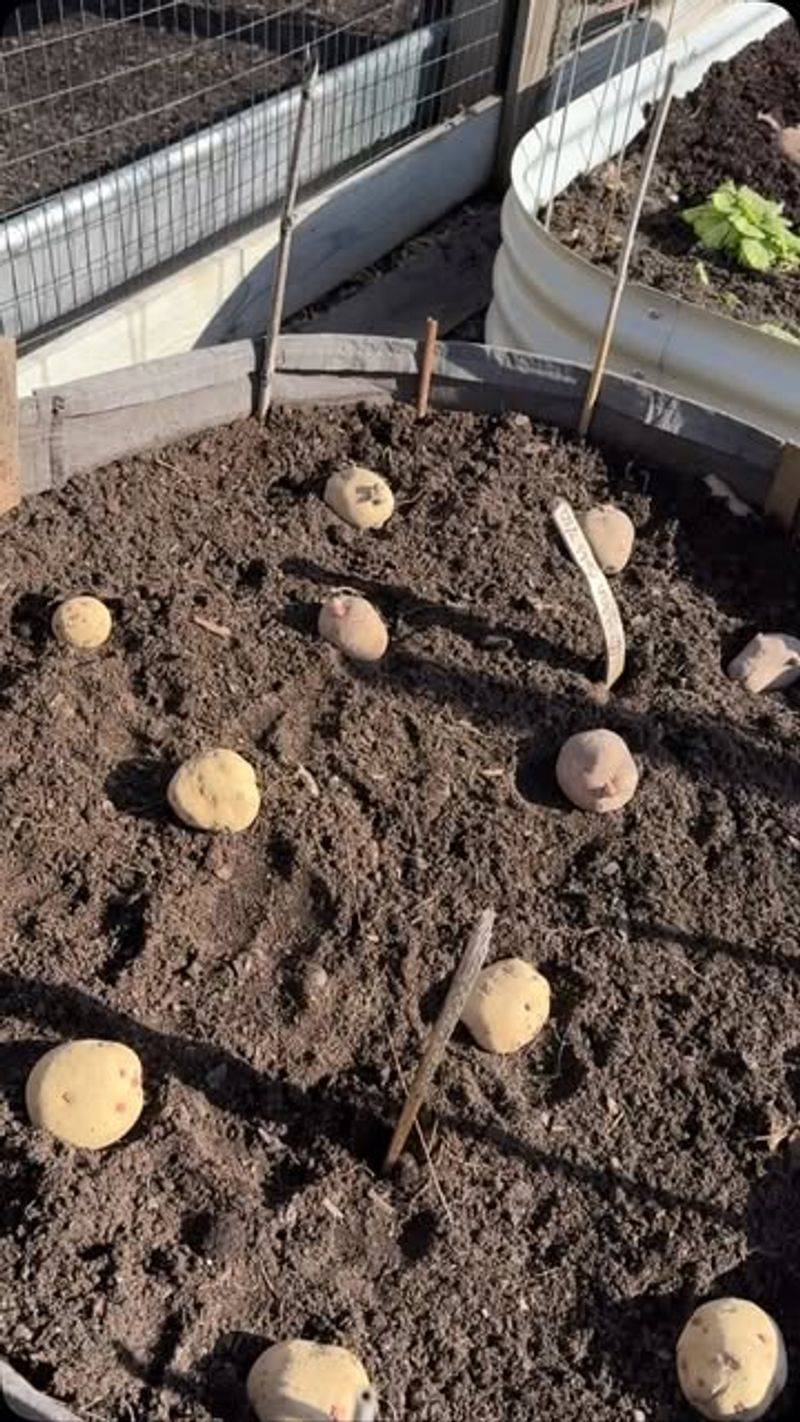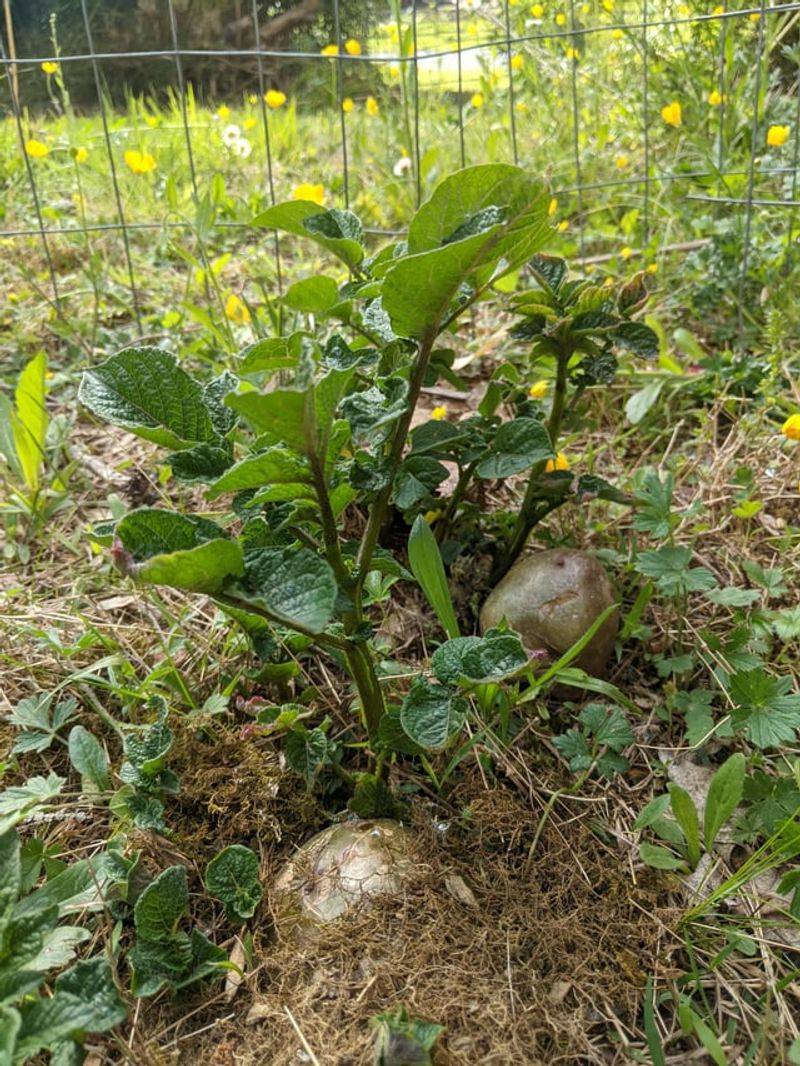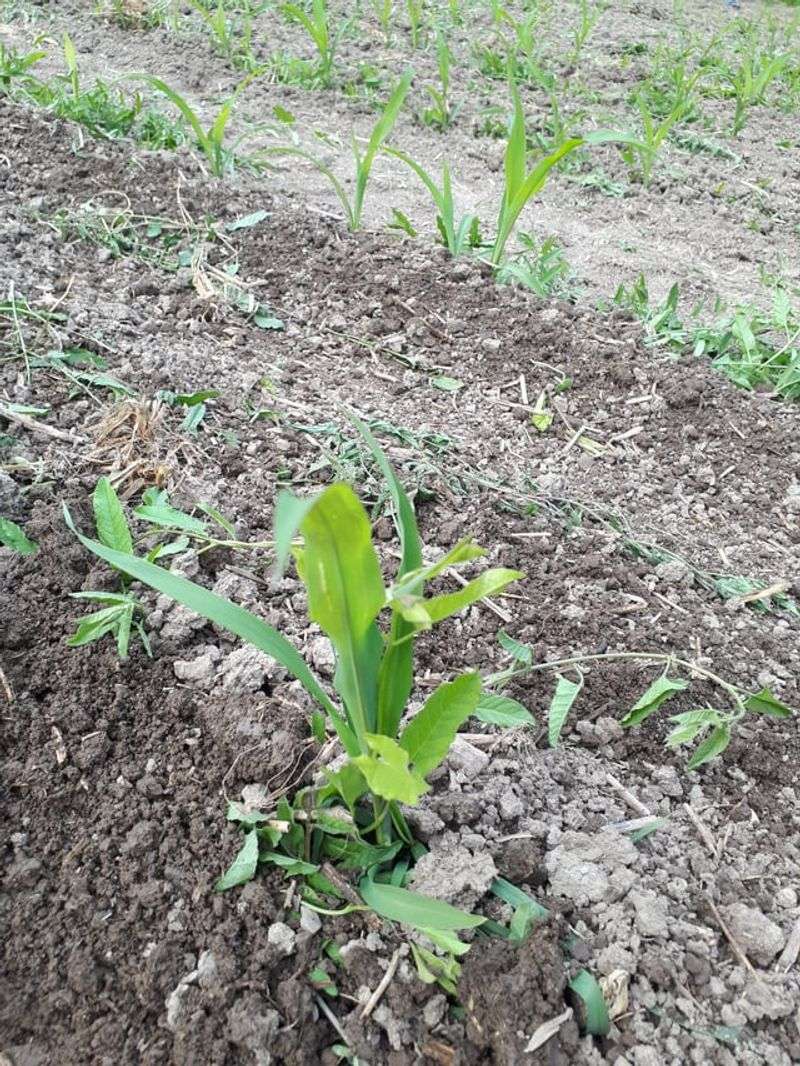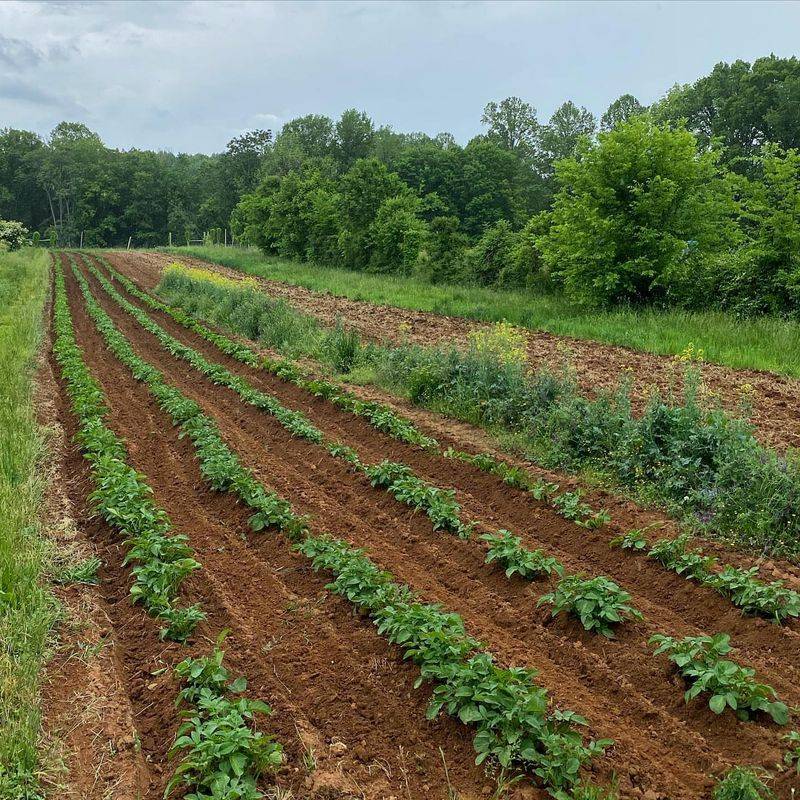Growing potatoes might seem like a walk in the park—until your harvest goes belly-up. From silent soil saboteurs to rookie slip-ups that fly under the radar, these spud spoilers can turn your garden dreams into a hot mess.
Don’t dig yourself into a hole—know what’s lurking beneath the surface before your crop’s toast.
1. Planting Store-Bought Potatoes
Many grocery store potatoes are treated with sprout inhibitors, making them poor candidates for your garden. They might also carry diseases that could infect your soil for years.
Instead, purchase certified seed potatoes from garden centers or reputable online suppliers. These are specifically grown for planting and tested to ensure they’re disease-free. The small extra cost pays off with healthier plants and better harvests.
2. Poor Soil Preparation
Potatoes thrive in loose, well-draining soil rich in organic matter. Heavy clay or compacted soil leads to misshapen tubers and increases the risk of rot.
Prepare your potato bed by working in plenty of compost and aged manure. For clay soils, add sand to improve drainage. Aim for a slightly acidic pH between 5.8 and 6.5 for optimal growth. Your spuds will thank you with a bountiful harvest!
3. Improper Spacing
Crowding potato plants restricts tuber development and creates the perfect environment for diseases to spread. Plants competing for nutrients and sunlight produce smaller yields.
Space seed potatoes about 12 inches apart in rows that are 2-3 feet apart. This gives each plant enough room to develop a healthy root system and form tubers without competition. Proper spacing also improves air circulation, reducing disease problems.
4. Inconsistent Watering
Potatoes demand consistent moisture, especially during tuber formation. Drought stress followed by heavy watering causes growth cracks and hollow heart disorder.
Aim for 1-2 inches of water weekly, adjusting for rainfall. Mulching with straw helps maintain soil moisture and temperature. Water deeply but less frequently to encourage roots to grow downward. A soaker hose or drip irrigation system delivers water directly to the soil without wetting the foliage.
5. Forgetting to Hill
Neglecting to hill your potatoes exposes developing tubers to sunlight, causing them to turn green and produce solanine, a toxic compound. Green potatoes are bitter and potentially harmful if eaten.
Start hilling when plants reach about 6-8 inches tall by mounding soil or straw around the stems, leaving the top leaves exposed. Continue this process every couple of weeks until plants flower. Alternatively, try growing potatoes in deep mulch or dedicated potato grow bags.
6. Colorado Potato Beetles
These striped beetles and their reddish larvae can defoliate potato plants in days. A single female lays hundreds of eggs, quickly creating an infestation that devastates crops.
Handpick beetles and crush orange egg clusters on leaf undersides. For organic control, try spinosad or neem oil sprays. Floating row covers early in the season prevent adults from laying eggs. Rotating crop locations yearly disrupts their life cycle and reduces future problems.
7. Potato Blight
Late blight—the infamous disease that caused the Irish Potato Famine—remains a serious threat. It spreads rapidly in cool, wet conditions, causing dark lesions on leaves and rotting tubers.
Plant resistant varieties like ‘Defender’ or ‘Elba’ when possible. Space plants for good airflow and avoid overhead watering. Apply copper-based fungicides preventatively before symptoms appear. Remove and destroy infected plants immediately to prevent spread.
8. Harvesting Too Early
Impatience leads many gardeners to dig up potatoes prematurely. Early harvesting results in smaller tubers with thin skins that don’t store well.
Wait until plants flower for ‘new’ potatoes, but for mature storage potatoes, hold off until vines yellow and die back naturally. After tops die, leave tubers in the ground for another 2-3 weeks to toughen skins. This patience pays off with better flavor and significantly improved storage life.
9. Wireworm Damage
These slender, hard-bodied larvae of click beetles tunnel through potato tubers, creating unsightly holes that invite rot and secondary infections. Damage often isn’t discovered until harvest time.
Reduce wireworm populations by avoiding planting potatoes in recently converted grassland. Try baiting with cut potatoes or carrots buried with a stick marker, checking every few days to remove collected wireworms. Growing a cover crop of mustard or buckwheat before potatoes can also suppress these pests.
10. Scab Infections
Potato scab creates corky, rough patches on tuber skins. While mostly cosmetic, severe cases can reduce yields and storage quality. The bacteria thrive in dry, alkaline soils above pH 5.5.
Lower soil pH by incorporating elemental sulfur or acidic organic matter like pine needles. Maintain consistent soil moisture during tuber formation, as dry conditions favor scab development. Plant resistant varieties like ‘Kennebec’ or ‘Red Norland’ in problem areas.
11. Improper Storage
All your hard work growing potatoes goes to waste with poor storage practices. Warmth, light, and humidity fluctuations cause sprouting, shriveling, and rot.
Cure freshly harvested potatoes in a dark, humid place around 65-70°F for 1-2 weeks to heal minor cuts and toughen skins. Then store in ventilated containers in a cool (38-45°F), dark place with 85-90% humidity. Check regularly for spoilage, as one rotting potato can quickly affect others.
12. Volunteer Potatoes
Those surprise potato plants popping up from last year’s missed tubers seem like free food, but they’re actually trouble. Volunteers can harbor diseases and pests that survived winter, creating a reservoir of problems for your new crop.
Pull volunteer potatoes as soon as you spot them. Practice thorough harvesting, using a garden fork instead of a shovel to reduce cutting tubers. Implement crop rotation, avoiding planting potatoes in the same spot for at least three years.
13. Planting During Hot Weather
Potatoes are cool-season crops that struggle when soil temperatures exceed 80°F. Hot conditions during planting lead to poor germination, weak plants, and reduced tuber formation.
Plant early varieties as soon as soil can be worked in spring. For fall crops, calculate planting time by counting back 15-16 weeks from your first expected frost. In hot climates, use mulch to keep soil cool and consider shade cloth during the hottest months.
14. Fertilizer Mistakes
Over-fertilizing with nitrogen produces lush foliage at the expense of tuber development. Conversely, nutrient deficiencies cause stunted growth and poor yields.
Apply a balanced fertilizer (like 10-10-10) at planting time. Once plants emerge, switch to a lower-nitrogen, higher-phosphorus and potassium formula (like 5-10-10) to encourage tuber formation. Avoid fresh manure, which can cause scab. A soil test before planting helps determine exactly what your garden needs.
15. Ignoring Crop Rotation
Growing potatoes in the same spot year after year invites trouble. Soil-borne diseases and pests build up, leading to increasingly poor harvests despite your best efforts.
Practice a minimum three-year rotation before planting potatoes in the same location. Avoid following or preceding potatoes with other nightshade family members (tomatoes, peppers, eggplants) as they share many diseases. Good rotation crops include beans, peas, and corn.
16. Sunlight Exposure
Potatoes exposed to light during growth or storage develop green patches containing solanine, a bitter-tasting compound that can cause illness. Even partial exposure through cracks in the soil can trigger greening.
Ensure proper hilling throughout the growing season to keep tubers buried. Store harvested potatoes in complete darkness. If greening occurs, cut away affected areas deeply before cooking, or discard heavily greened potatoes entirely.

